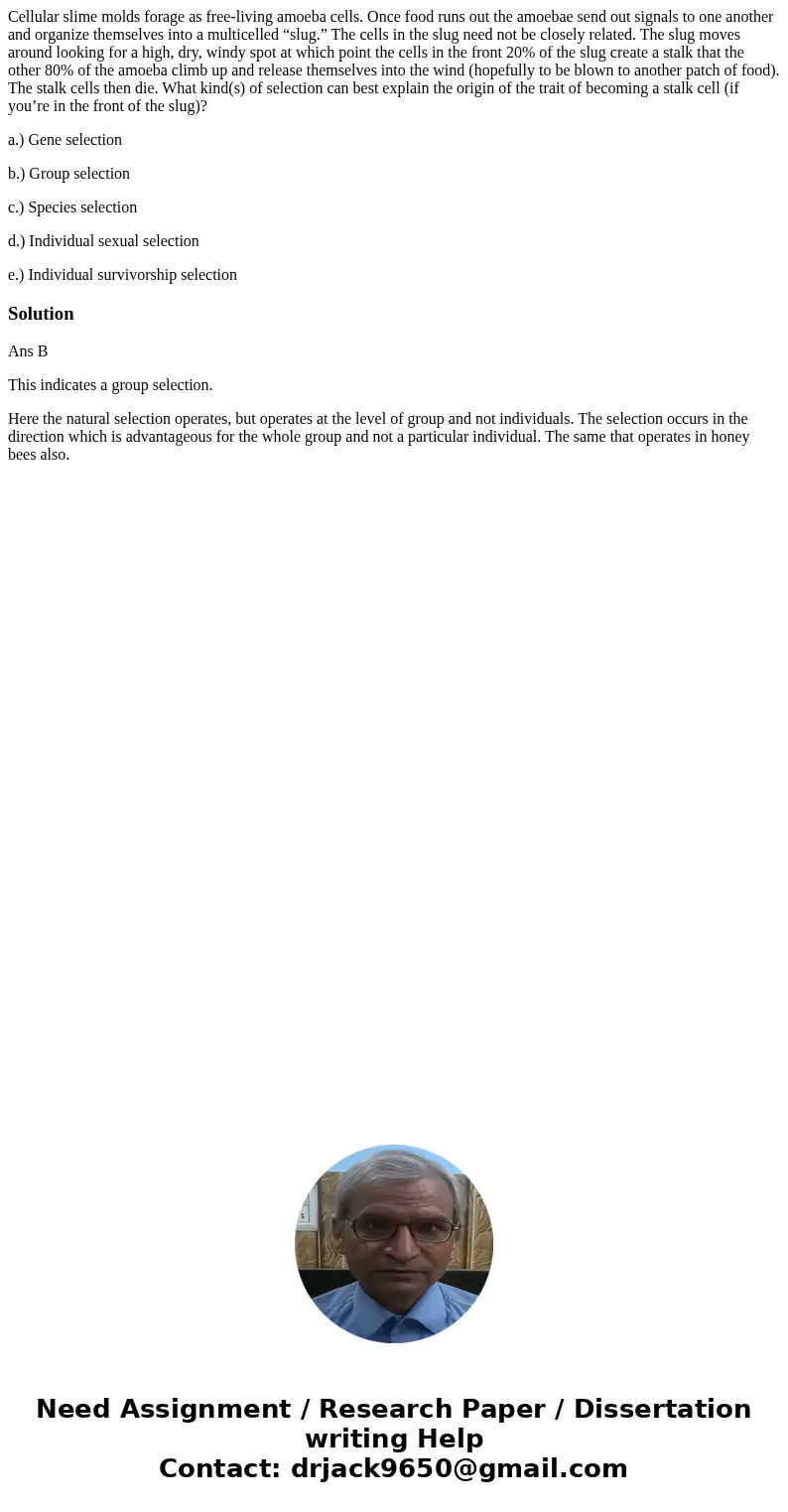Cellular slime molds forage as freeliving amoeba cells Once
Cellular slime molds forage as free-living amoeba cells. Once food runs out the amoebae send out signals to one another and organize themselves into a multicelled “slug.” The cells in the slug need not be closely related. The slug moves around looking for a high, dry, windy spot at which point the cells in the front 20% of the slug create a stalk that the other 80% of the amoeba climb up and release themselves into the wind (hopefully to be blown to another patch of food). The stalk cells then die. What kind(s) of selection can best explain the origin of the trait of becoming a stalk cell (if you’re in the front of the slug)?
a.) Gene selection
b.) Group selection
c.) Species selection
d.) Individual sexual selection
e.) Individual survivorship selection
Solution
Ans B
This indicates a group selection.
Here the natural selection operates, but operates at the level of group and not individuals. The selection occurs in the direction which is advantageous for the whole group and not a particular individual. The same that operates in honey bees also.

 Homework Sourse
Homework Sourse